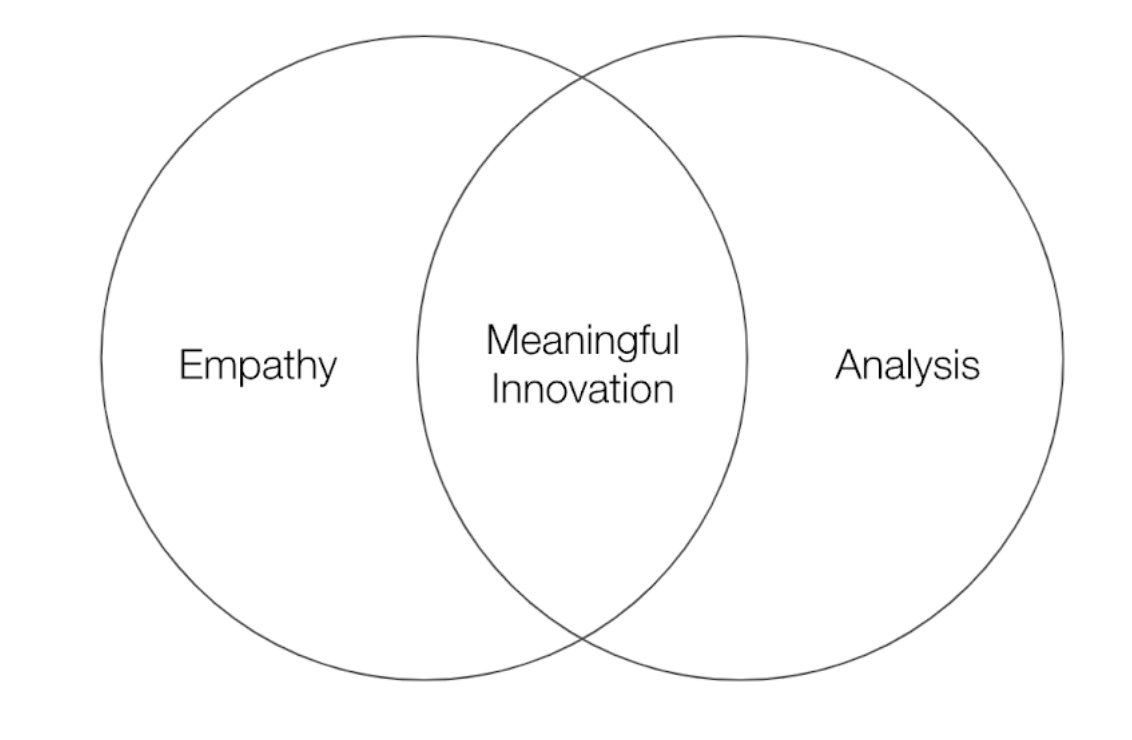There is a difference between wanting to innovate, and needing to innovate. For companies wanting to innovate they typically are in control of their ambitions, decisions and timeline, however, companies needing to innovate are usually under external forces calling for a response and dictating a certain course of action at speed. In these latter situations, the uncertainty can lead to the urge for fast action, but simply being first to the market can do more harm than good.
Unexpected events or disruptions in the market that call for immediate responses, should not steer brands off course from their long term brand ambitions, but can instead contribute to them when framed correctly. This is why we believe the appropriate innovation response for brands needing to innovate shouldn’t just be quick but should be meaningful.
Fast isn’t always best
The trouble with prioritising speed over content, is that it can result in knee-jerk obvious answers. While there isn’t anything wrong with ‘obvious’ per se, it’s likely that competitors came to the same conclusions. Looking at the advertising world, this became apparent with many of the early well intentioned Covid responses quickly becoming a parody montage, resulting simply in white noise with any meaningful message being lost.
A study conducted by Adobe actually found that these campaigns had a negative impact on customers, who were already overwhelmed by the situation, and who preferred to think of something other than Covid.
Instead customers found that customers preferred more meaningful responses, which stayed close to the brands role. Some of the more memorable product/service innovations during this period can be seen where brands had more popular and timely responses such as the West Elm and REI staycation home camping collaboration, or Gucci’s personalised video shopping assistant for customers that could no longer visit stores or as seen on a much smaller scale in Amsterdam where restaurant Mediamatic Eten, opted to redefine the dining experience rather than simply move to takeaway through their social distancing ‘glass concept houses’.



What fast innovation actually means...
This need for steadfast action has resulted in the popular idea of ‘Fast Innovation’ which is seen as a silver bullet when it comes to ‘fast to market’ responses. However, when you deep dive into what fast innovation actually entails, as noted by it’s author Prof Clayton Christensen of Harvard Business School, it’s main focus is on fast development approaches such as agile and lean, vs fast thinking. This in turn puts an emphasis on ‘getting to market fast’ vs ‘getting the right thing to market fast’, which for the latter still requires upfront thinking and decision making.
So how can brands decide a course of action quickly without falling into obvious traps, and ensure that fast innovation efforts add to meaningful brand building.
Making it meaningful
When we talk about meaningful innovation, we are not talking about innovating for the sake of short term top of mind relevance, but instead doing it for the purpose of making a genuine impact on the customer brand experience.

The approach of meaningful design as described by the Stanford School of Design, is about a mix of empathy and analysis. While empathising or identifying the concerns of customers at times of uncertainty might be easy, the challenging part is relating what that means for the brand, which is where analysis comes in.
The aim of analysis is to translate the customer insight into something which relates to something meaningful for the brand experience. By doing this designers are able to frame insights into opportunities within the context of the brand providing a solid foundation for new concepts, ensuring that any fast innovation links back to the core aims of the brand.
Analysis for fast innovation
To optimise this approach for brands needing to think and act fast to market disruptions, I have put together a number of simple questions which can provide a basic analyse of the situation, with respect to how best to respond.

The first step of this analysis is ensuring that it is grounded within the context of the ‘status quo’ of the brand. For this, simply considering what your brand does and the benefits it offers customers creates the brand lens through which to view the market disruption.
Once this lens has been established, brands can consider question 3 which is the situational context for the brand lens, asking ‘does the current situation affect our customers ability in gaining access to the benefits our brand delivers - and why?’. The role of the simple yes or no response aims to separate ‘bandwagon’s’ from meaningful responses, with the why justifying either answer.
Lastly the fourth question aims to address the specific ways in which a customer's experience has been affected which prevents them from gaining access to your brand experience. Here there are a number of thought starters from changing or repositioning a product/service offering, changing the channels which customers can access a brand, redefining the brand experience etc.
In the case of camping supplier REI Coop, following these questions the approach could have looked like the following:
1. What product/service does our brand provide?
We sell camping equipment for outdoor adventures.
2. What benefit do we provide our customers?
We provide customers the opportunity to connect with nature who believe ‘we believe a life outdoors is a life well-lived’.
3. Does the current situation affect our customers ability in gaining access to the benefits our brand delivers - and why?
Yes - Customers are no longer able to travel freely and vacation due to lockdown measures.
4. How can we continue to deliver the benefits our brand provides given these specific constraints?
By focusing on the ways customers can currently connect with nature, and their new holidaying habits.
By asking these simple questions, brands can quickly start to analyse disruptions in the market allowing them to decide on whether a response is called for, as well as identify opportunities for innovation based on how the customer brand experience is affected. These questions in turn enable a brand to sense check on ideas that will contribute to meaningful brand growth, versus white noise.
Starting right in fast innovation
These questions provide a sense of when and where to innovate, when it comes to market disruption. Answering these questions can be done simply in a brainstorming session with colleagues or through what we call an Opportunity Workshop which can last as little as 4 hours.
Through the workshop format, the approach is very much the same as the questions outlined. Here we look at the existing customer journey, then considering what the impact of a given disruption would have on it. From here opportunity areas can be identified for innovating on in an ideation exercise. The output of this exercise provides directions on which to innovate on which can directly be used to kickstart fast innovation responses.
When it comes to market disruption, ensuring the efforts of fast innovation aren’t wasted or misguided requires starting from the right place to ensure that it is meaningful. For this we suggest starting with framing change in the context of your brand, starting not by asking ‘what do we do now’ and asking ‘what have we always done, and how does this change’. By doing this brands can ensure that fast innovation will lead to meaningful innovation.

